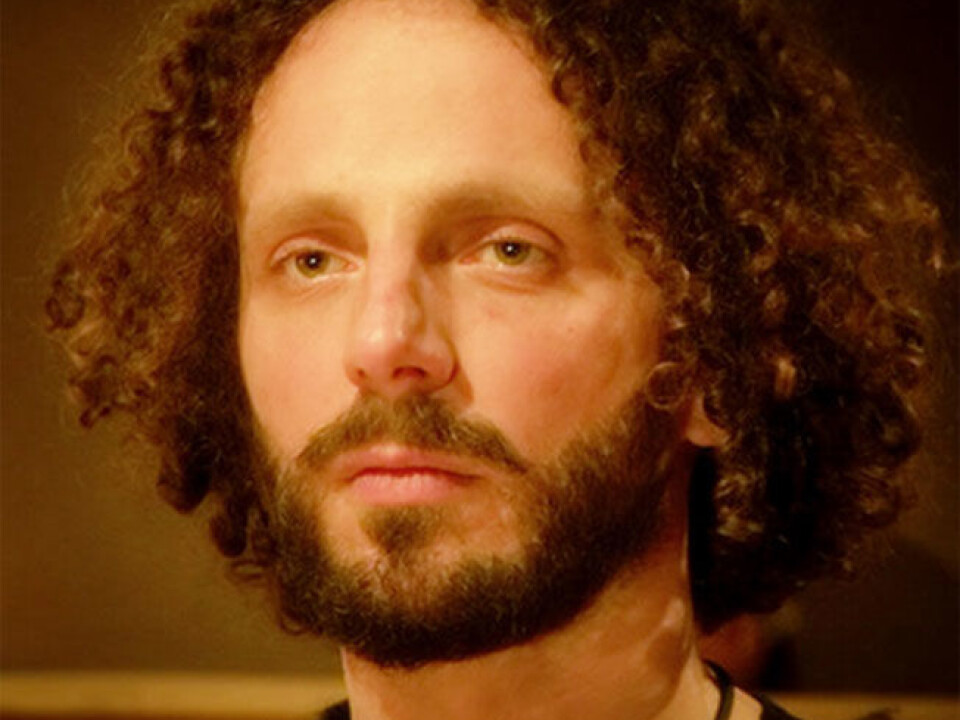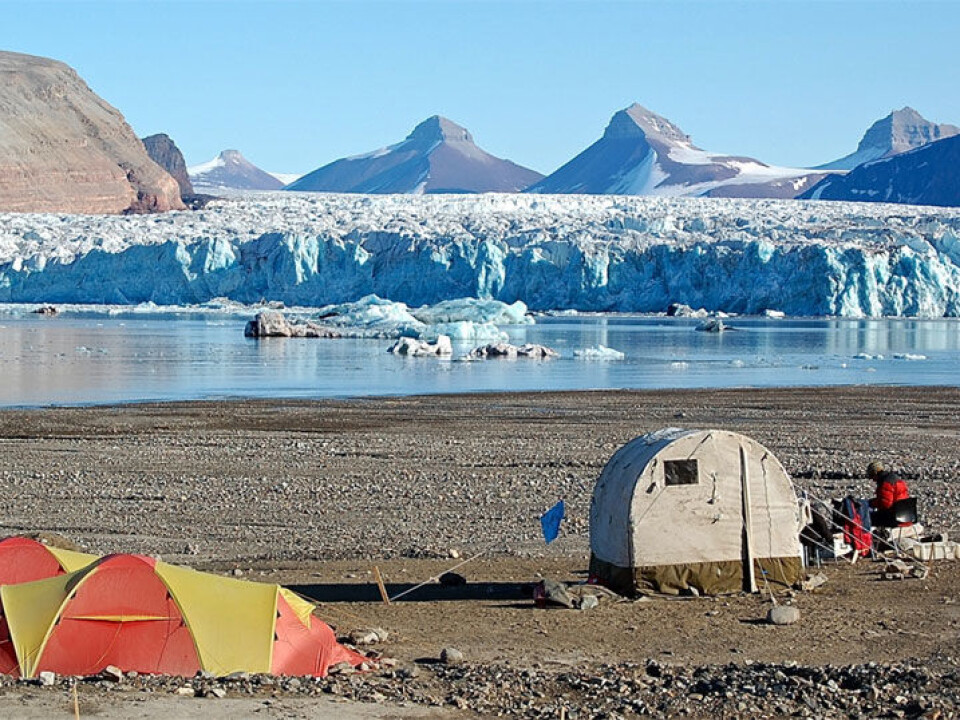
Brains like glaciers
When a glacier calves into the ocean scientists see the same patterns that are found in brain impulses and other complex, unpredictable systems.
Denne artikkelen er over ti år gammel og kan inneholde utdatert informasjon.
What happens when a glaciologist brings a brain specialist to artic Svalbard to study the ways that glaciers calve?
“It was rewarding and fun collaborating with a researcher who had never seen a glacier before,” says Glaciologist Anne Chapuis at the Norwegian University of Life Sciences (UMB) at Ås.
“This was my first experience with such an interdisciplinary project,” says Tom Tetzlaff. He is a physicist but now works in the field of computational neuroscience at UMB.
Chapuis got together with Tetzlaff through her need to understand the complicated patterns she found in data about 7,000 calvings.

“We’ve studied the frequency of various sized calvings,” says Tetzlaff. The researchers found a strong connection with things such as processes in the Earth’s crust, money markets – and nerve impulses in the brain.
Different function – same structure.
What unites the different processes both in and outside the brain is their special kind of complexity: They are unstable in the transition from one state to another.
Theorists call this self-organised criticality. Practical examples include super-cooled water, unstable masses of air, tension in the Earth’s crust near the edges of continental plates, overheated stock markets or glacial ice tongues running into an ocean surface.

The result can be the instantaneous formation of ice crystals, thunderstorms, earthquakes or stock market crashes – or glaciers that break off into larger or smaller icebergs in the sea. That’s called calving.
Hard to predict
Self-organised criticality is the cause of processes that are difficult to predict in detail. Meteorologists cannot say exactly where hail will fall or lightening will strike. Seismologists cannot predict when and where an earthquake will shake things up. And stockbrokers could earn more if they knew exactly when a market would collapse.
And glaciologists don’t know precisely when a chunk of glacial ice will splash down into the sea.
Nevertheless, scientist can detect patterns in the complexity if they step back mentally and see the forest instead of the trees, or the statistical whole instead of the individual parts.
Pioneers
Chapuis and Tetzlaff have done just that. They have spent three summers in tents near glaciers on Svalbard together with an international team of four volunteers from the University Centre in Svalbard (UNIS).
“This is the first detailed charting of calving over a long period of time, day and night,” says Tetzlaff.
“The glaciers are about 20 kilometres from the research station at Ny Ålesund, so we were boated out and camped in tents for up to two weeks at a time,” says Chapuis.
Used their ears and eyes
She says initially the biggest problem wasn’t nosy polar bears, but difficulties coping with the work shifts and the monotony.
“One night we had a snow storm and the next morning we spotted polar bear tracks at the camp,” she says. They had no closer encounters with the dangerous predators. But they were aided by a local watchdog they brought along named Imjak, who was experienced at barking at approaching bears.
The registration of the glacial activity was another problem. It didn’t take long to find out that technical aids were of little use.
“It was impossible to distinguish gusts of wind blowing in the microphone from the sound of calving and our cameras didn’t have high enough resolution,” says Chapuis.
“On top of that it was cold and batteries didn’t last as long as they were supposed to.”
As a result the calving had to be classified as they occurred by watchful eyes and ears.
Sound was often an important indicator of size. The calving couldn’t always be seen, but a long rumble indicated a large calving while a sharp bang was a smaller one.
“It’s like when a skyscraper falls down,” says Tetzlaff.
Closed system
After a total of 20 days of observations the two researchers had collected enough data for an article in a science journal. Both emphasize that their results are preliminary. But they provide fascinating insight into the inner life of glaciers.
The central conclusion is: A glacier can be viewed as a complicated closed system. What happens when it spits small and large blocks of ice into water is the result of unstable processes, a self-organised criticality.
Put differently: The glacier lives its own life and develops its complex calving pattern without needing any external influence.
Sinking curve
Chapuis and Tetzlaff have created a mathematical model that simulates this pattern. A curve comes out of the model that is seen in most complex systems of this kind.
“The larger calvings are less frequent, while the smaller ones are more frequent,” says Chapuis.
The power law is found in everything from earthquakes to stock market crashes. Large incidents are less frequent than small ones and follow a declining curve.
A similar falling curve is also typical for chance processes. For instance there are fewer who draw seven correct numbers in the state lottery than six numbers, etc.
But the power law gives more incidents of “seven correct” than would be expected by pure chance. A glacier calves large blocks of ice more often when it obeys the power law.
“Power law has a characteristic long tail of larger incidents. Their frequency diminishes surprisingly slowly. In other words, the really large incidents are rare but they will occur sooner or later,” says Tetzlaff.
The curve isn’t the same for all glaciers. Some are more unstable than others. They exhibit more large calvings and few small ones than the average glacier. As a result, these are glaciers that are receding faster.
Simplified model
“Our model shows that as temperatures increase this is exactly what will happen,” says Tetzlaff. However, he stresses that it is a simplified model.
“We need more observations over a longer period of time in which average temperatures vary to test whether the model actually works, to see if higher temperatures really do yield more unstable, receding glaciers,” he says.
“The glacier can also recede because of a chance bunch of larger calvings during a shorter period,” adds Chapuis.
Translated by: Glenn Ostling






























